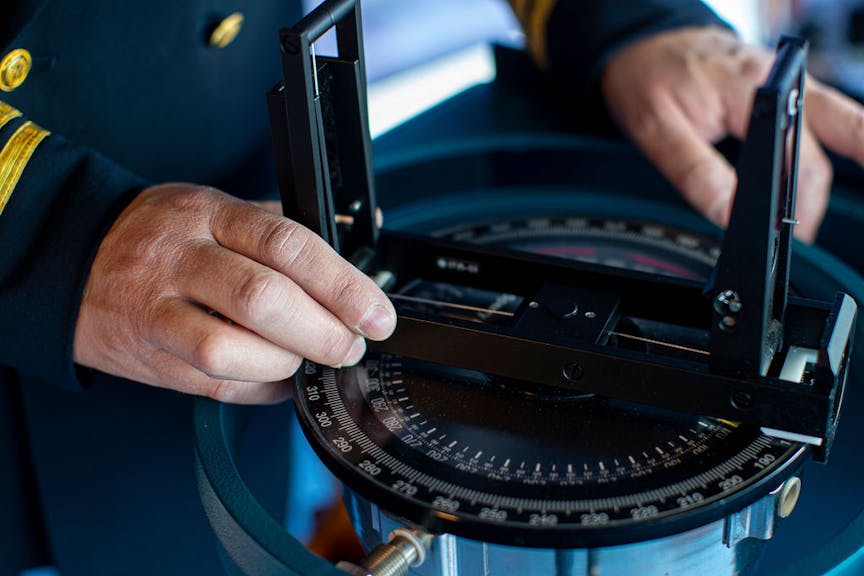Navigation
ECDIS, when correctly used and configured, provide navigators with very high-level situational awareness. In our monthly theme we will highlight the key issues, best practices and illustrate the key parameters to be checked and understood.

Navigation – ECDIS
Anti-grounding functions:
There are user defined parameters and parameters that are provided by the ENC. Make sure you understand the differences!
USER INPUTS:
- SAFETY CONTOUR = ANTI-GROUNDING ALARM
A visible boundary between navigable and non-navigable area. A recommended setting: maximum draft + tide + squat + UKC. - SAFETY DEPTH
An alarm that indicate sounding or object, which is unsafe to pass over in waters deeper than the set safety contour. A recommended setting: same as safety contour. - DEEP CONTOUR
Provide visual indication to navigator that vessel is entering shallow water. A recommended setting: as minimum, twice the vessel’s maximum draft. - LOOK-AHEAD RANGE
The range in distance or time (user specified) ahead of the vessel. - SAFE CHANNEL WIDTH
The range in lateral distance from vessel.
ANTI GROUNDING FUNCTIONS – PDF: navigation_anti_grounding
Voyage and passage planning:
Correctly configured (USER INPUTS) ECDIS provide safe voyage and passage plans. It is paramount that the user checks the route by ECDIS own “route checking” function. Different manufacturers have different names for the same function.
Verify that the user inputs are correct and safe for the intended passage and voyage.
Navigational Aids:
User charts should be part of the passage and voyage planning.
Visual and chart settings/configuration:
Ensure that your ENC charts are updated!
When opening an ENC-chart it is automatically displayed in the default scale, called
compilation scale. It is possible to zoom in and out as the user wishes. If a chart is not displayed in the optimal scale the ECDIS will display a note about the appropriate scale for the chart.
If a displayed chart is zoomed in to over scale, while part of the screen is displaying a chart in appropriate scale, you will see vertical lines across the over scaled chart
ECDIS can be used either two or multi color display modes:
Source: Furuno
Training:
Navigators using ECDIS are required to have both the generic and the type specific training.
PSC:
Some sample questions and check points commonly used in conjunction with ECDIS:
- Cerftification – vessels safety equipment certificate and ECDIS type approval certificate
- Documented procedures and instructions in SMS
- Software maintained to the latest IHO standards
- Charts updated and latest edition of the official ENC
- Back-up arrangement(s) – as per regulations
- Approved generic and type specific training
- Master and navigating officers are familiar with operation and can demonstrate operational competency
- Conformance and alignment with sensor inputs (positioning system, gyro compass and speed)
- Periodic tests and checks according to manufacturer’s instructions.
- ECDIS planning and monitoring settings (USER INPUTS) are appropriate for vessel size and trading areas.
ECDIS FLOWCHART – PDF: ecdis_flowchart
Additional information:
IMO:
ECDIS – Guidance for good practise
Guidelines for theh presentation of navigation-related symbols, terms and abbreviations




